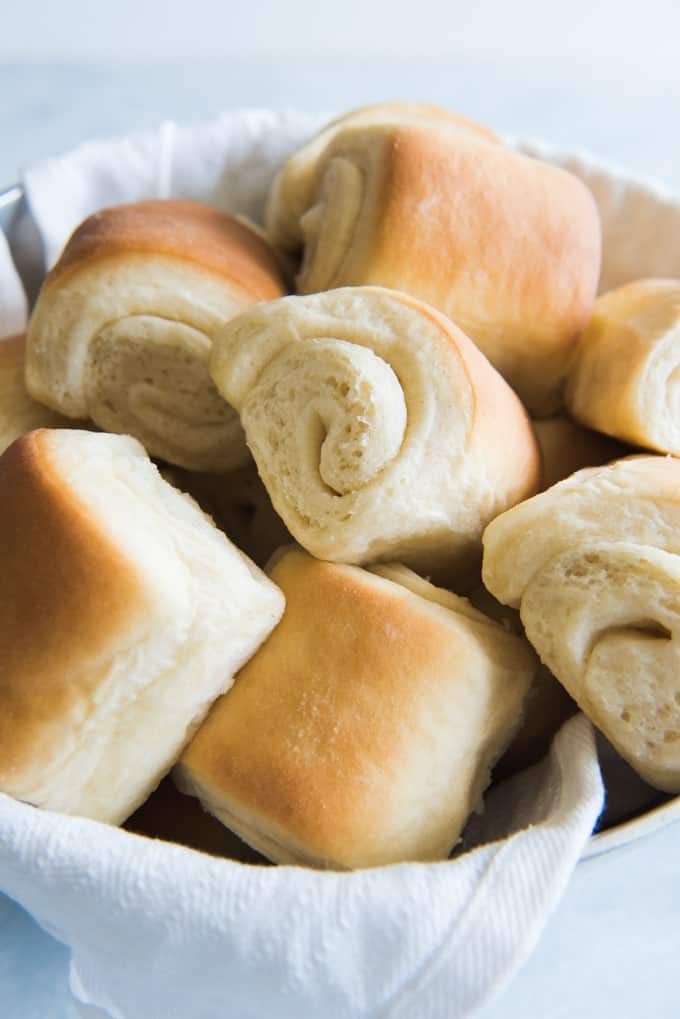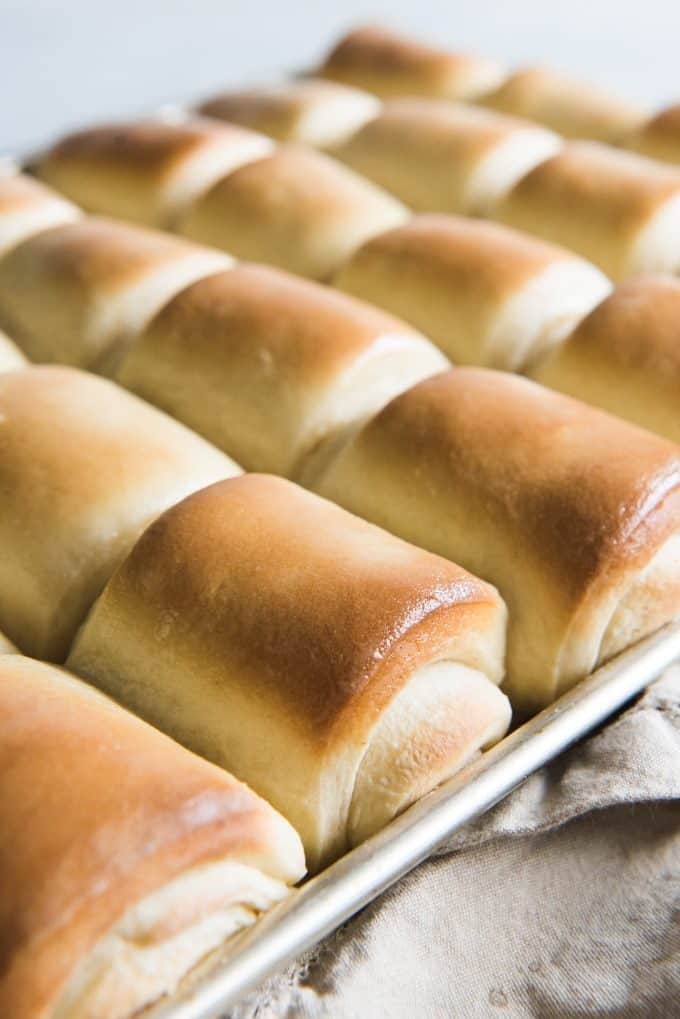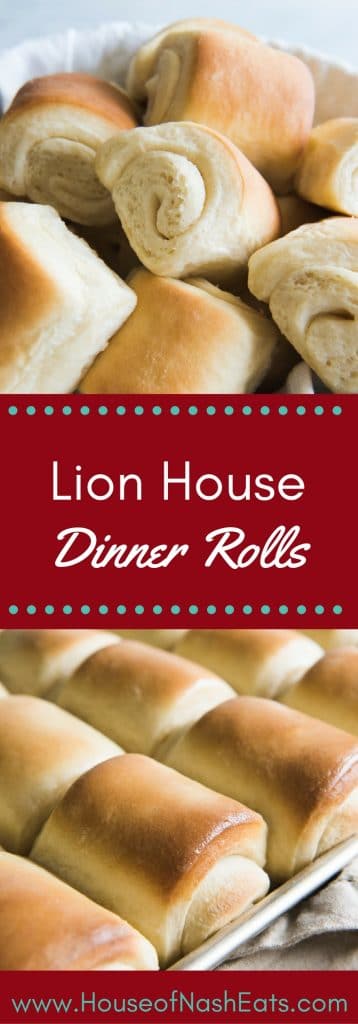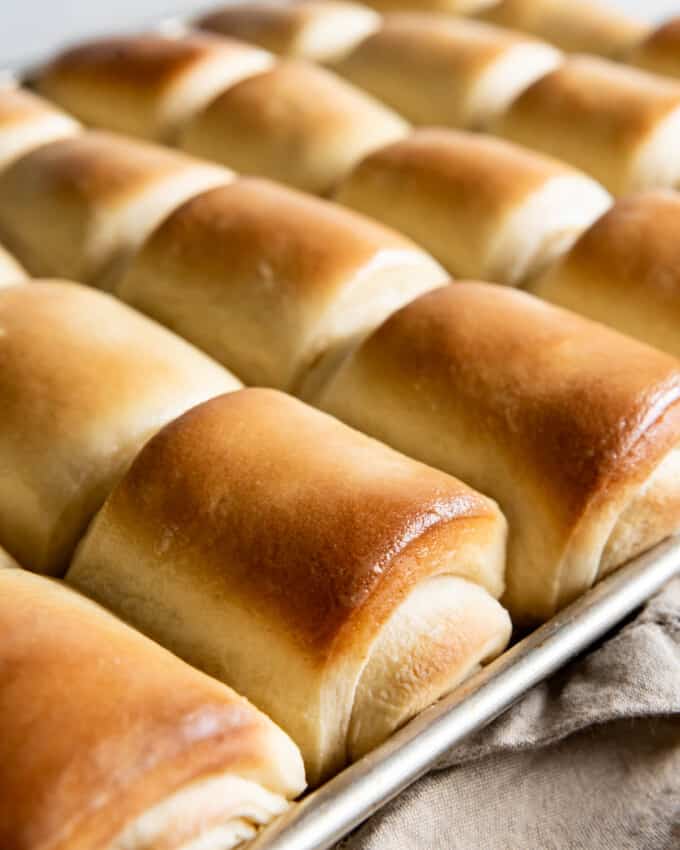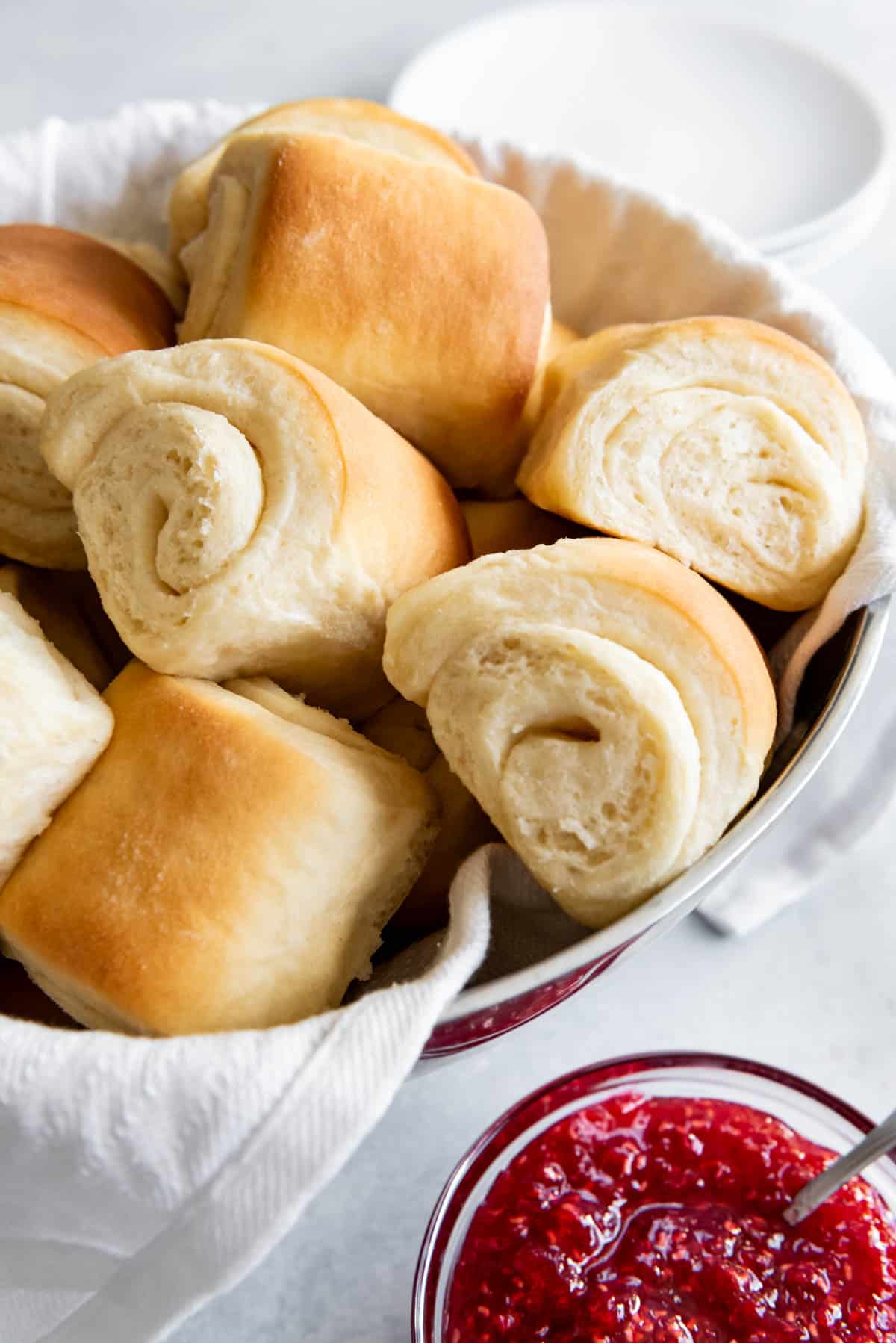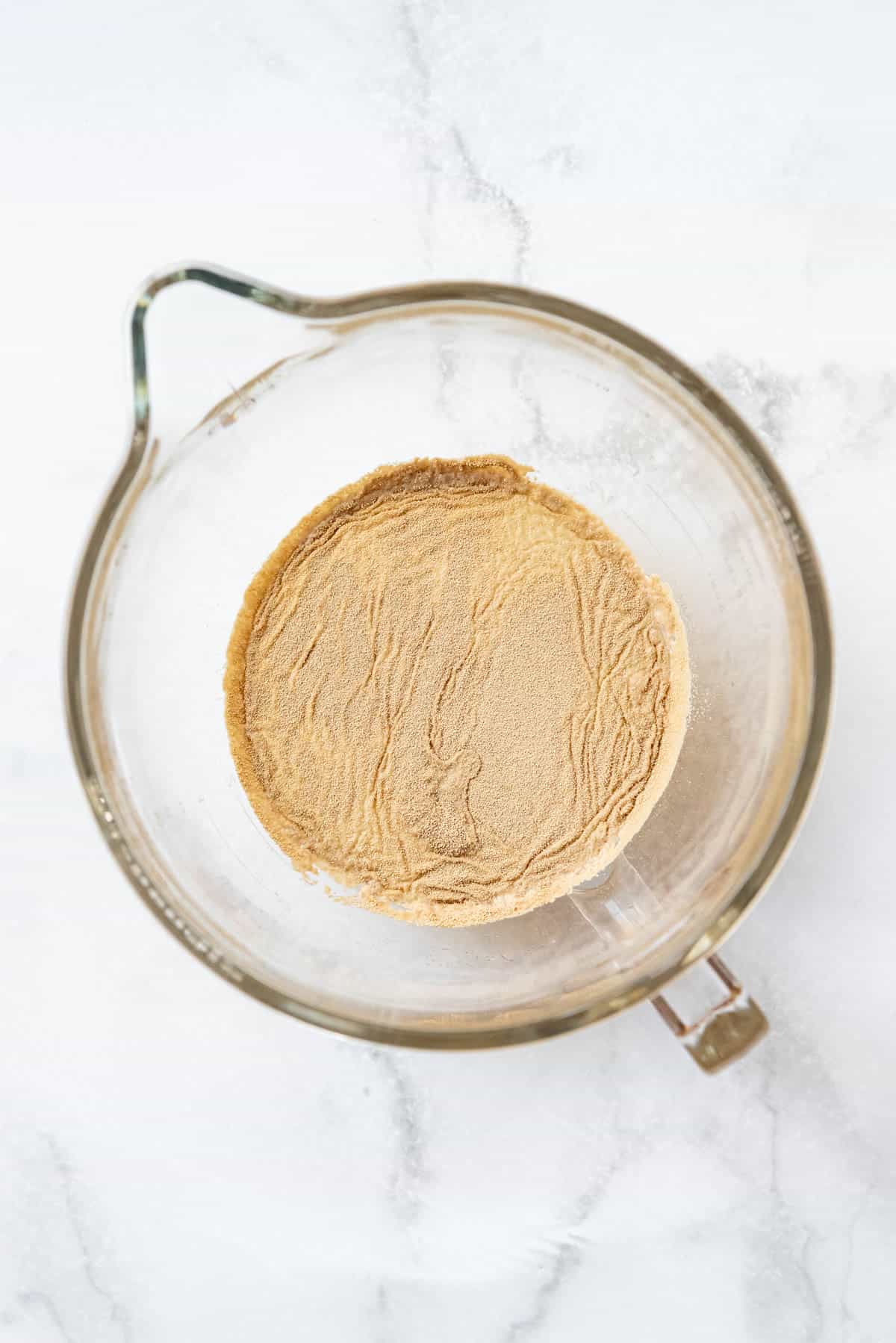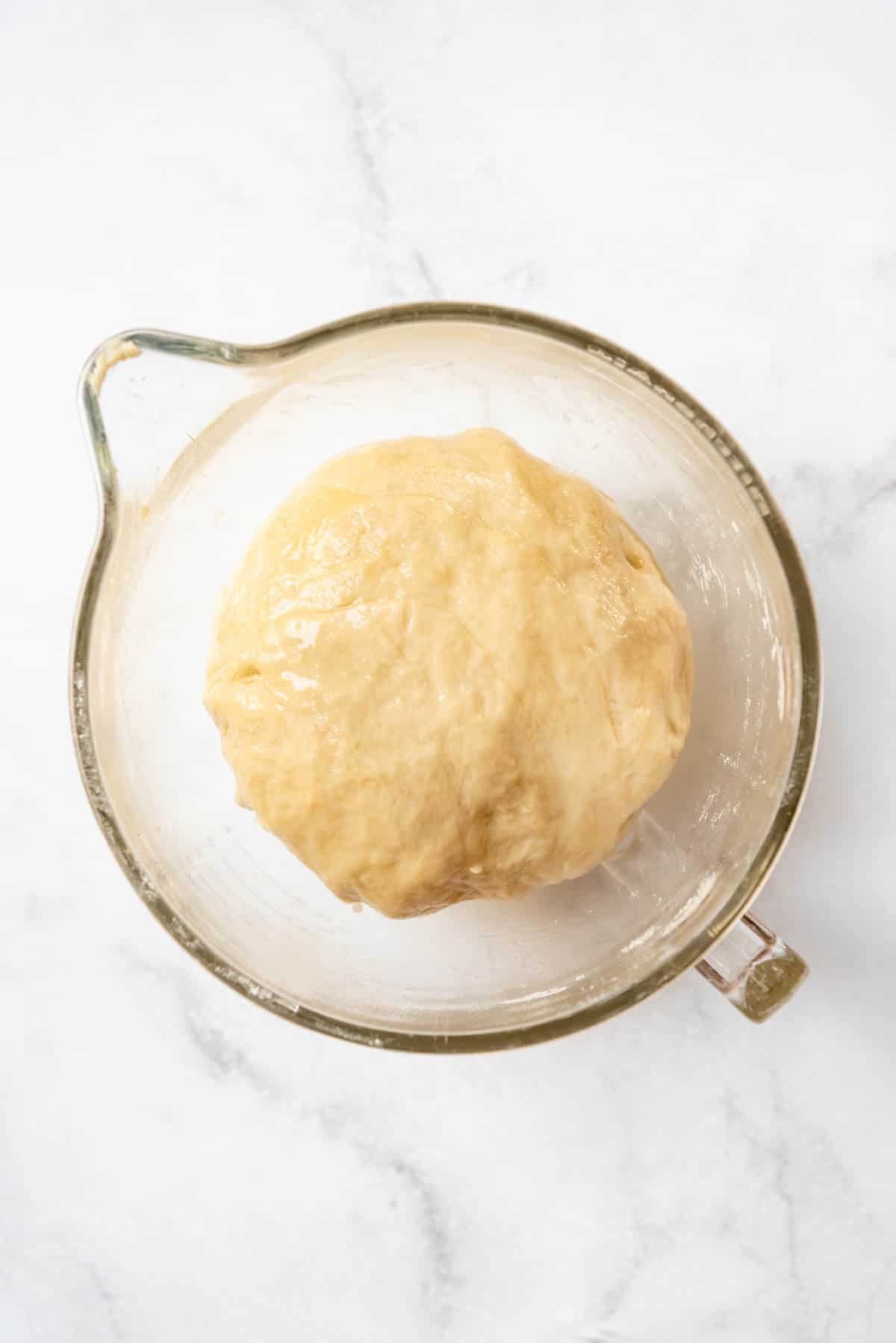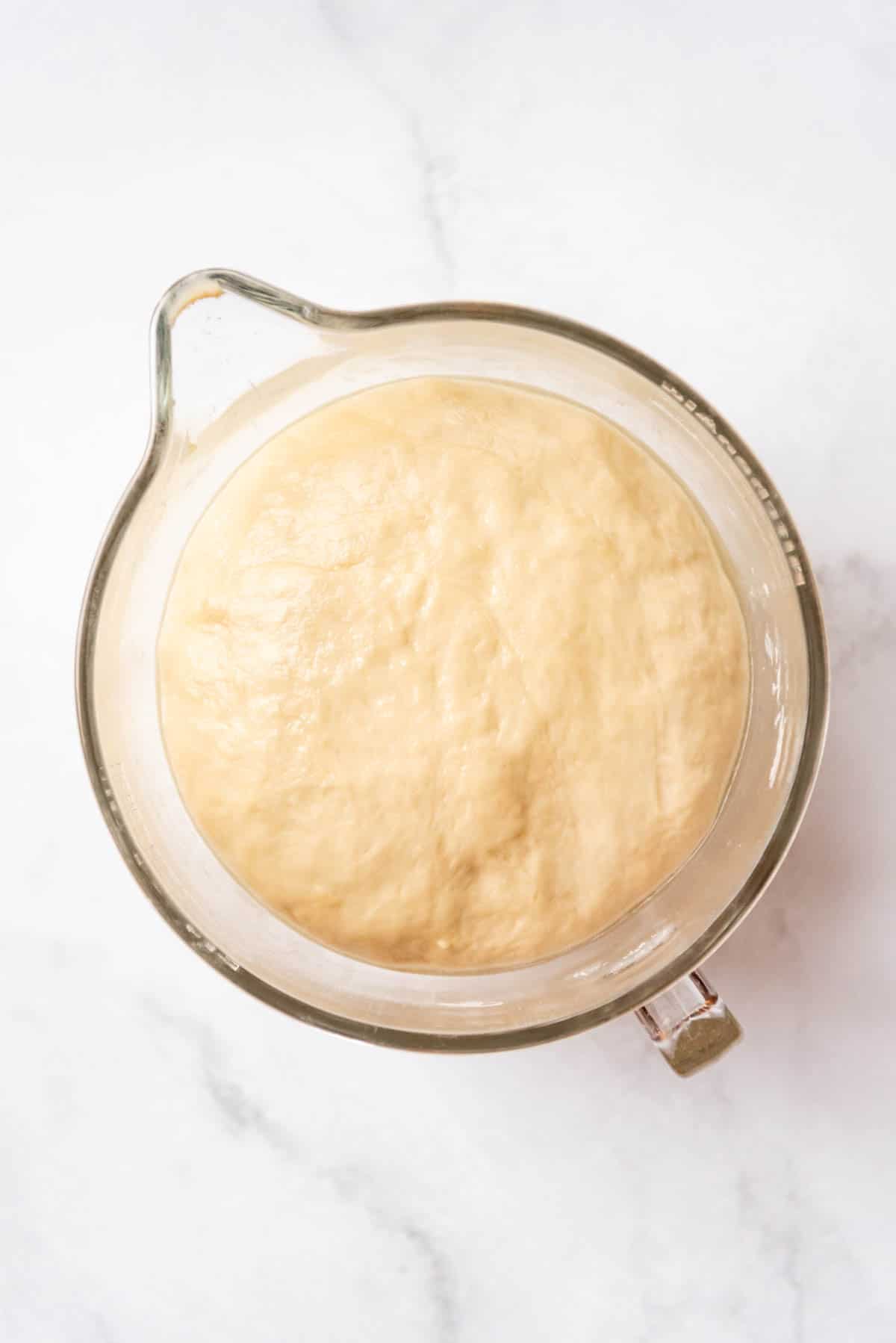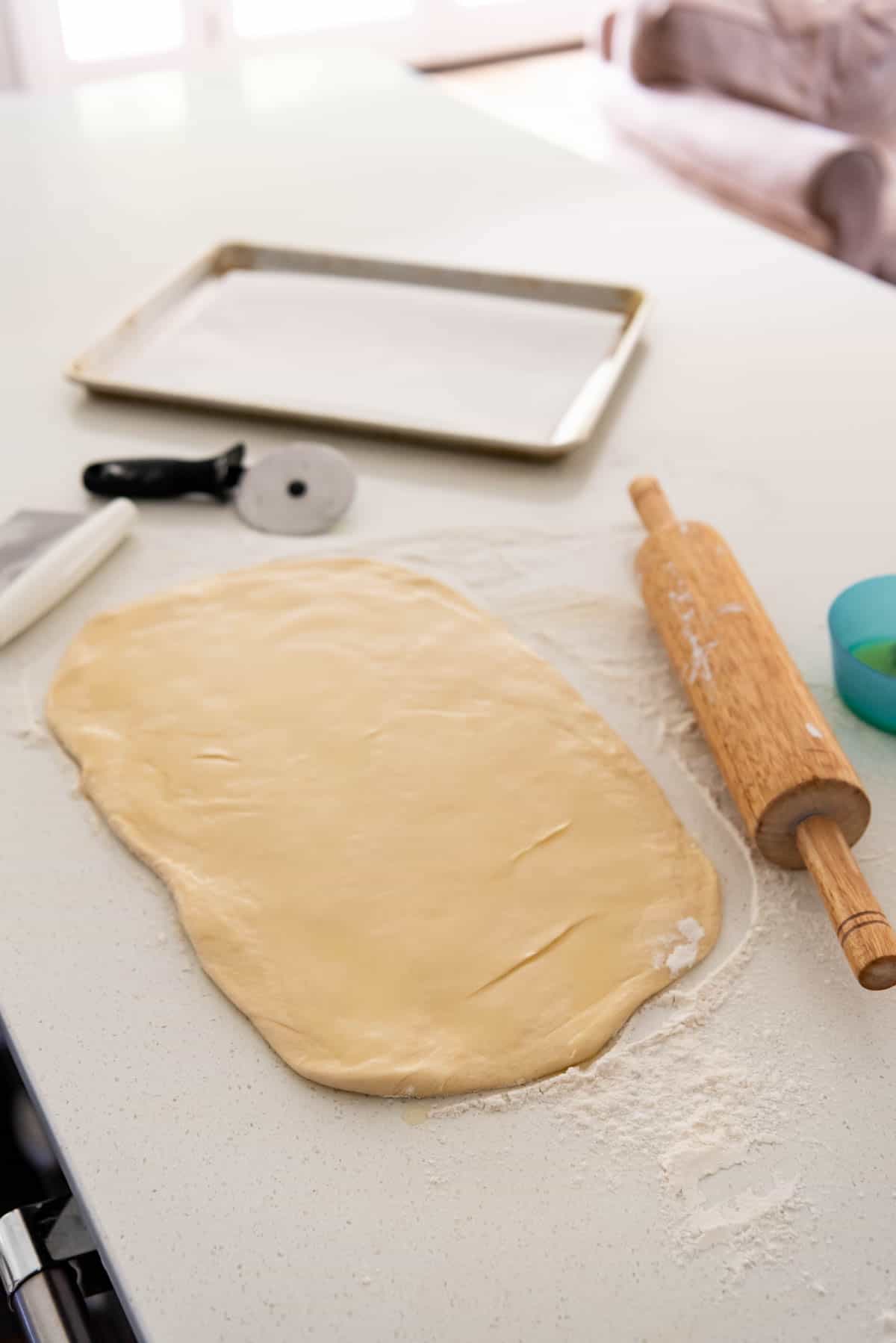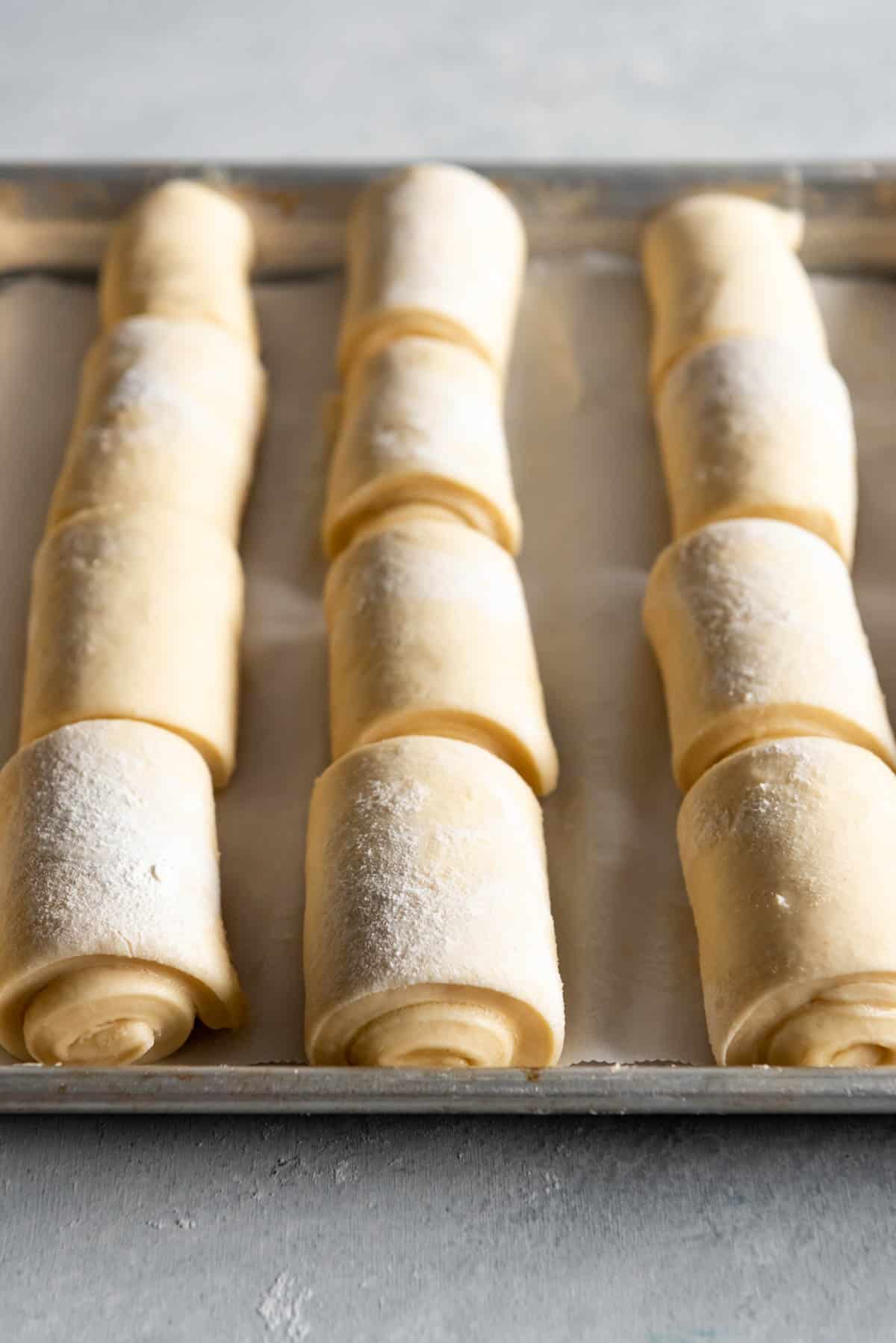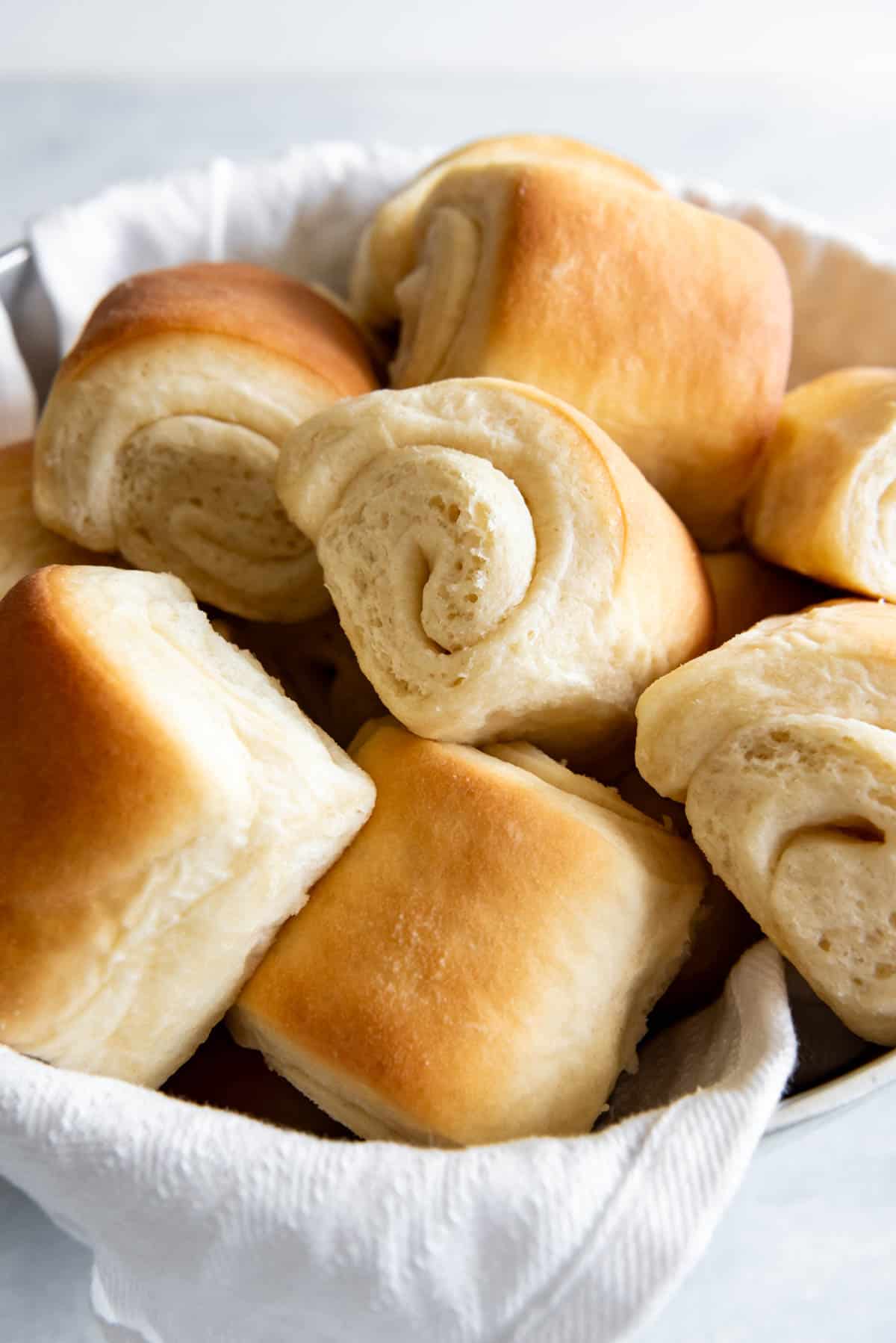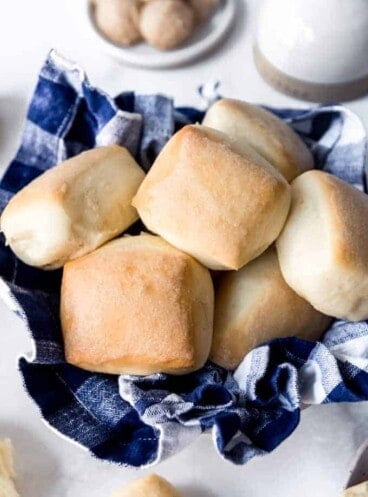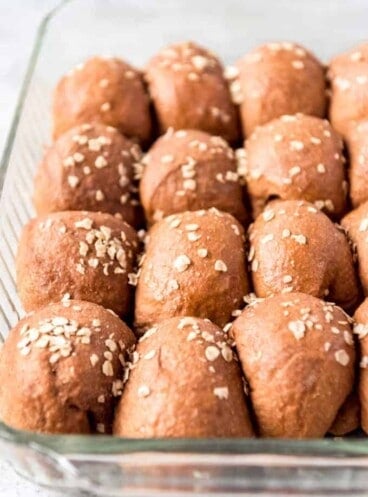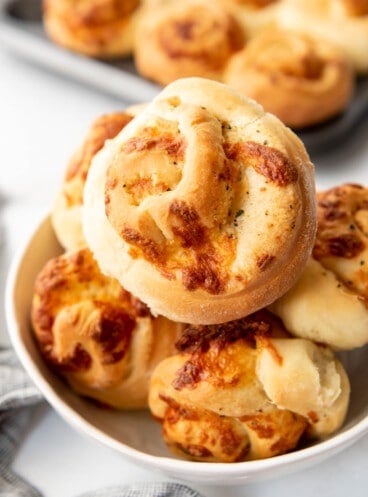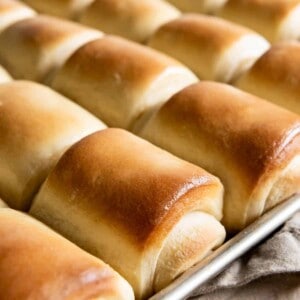When it comes to Thanksgiving dinner, I have a confession to make. As much as I love the pie, my favorite thing of all is the fresh, homemade dinner rolls. Especially with some homemade raspberry freezer jam to go on them. A roll with jam is ALWAYS my last, ultimate dessert of the day. We love homemade rolls around here! Some of our other favorite roll recipes are these Homemade Brown Bread Dinner Rolls, my delicious Pillsbury Crescent Rolls (Copycat), these Copycat Texas Roadhouse Rolls, and my Soft Homemade Potato Rolls. While I have a few roll recipes that I make (like these incredible Knotted Orange Sweet Rolls from my sister-in-law, Deborah, or these homemade potato rolls that use up leftover mashed potatoes), these Lion House Dinner Rolls are the ones I always go back to as the best I have ever had.
Where are Lion House Rolls from?
Unless you are from Utah, you may not have ever heard of Lion House dinner rolls. There is a restaurant in Salt Lake City called the Lion House Pantry where they make these rolls, along with a bunch of other delicious food. My mom had a couple of Lion House cookbooks when I was growing up, and those recipes were well-loved. These rolls are so light and fluffy and buttery inside. I’ve never had another dinner roll quite like them! These triple-butter dinner rolls have butter in the dough itself, as well as a thin layer of melted butter brushed onto the rolled dough before shaping, and then even more melted butter on the tops of the warm rolls when they come out of the oven! You can see why these rolls are amazing now, right? Each roll is made of a dough rectangle that is rolled up into a cylinder, creating those wonderful layers and a really unique roll shape. I’m sure these Lion House dinner rolls will be as big of a hit at your house as they always are at ours! You might want to double the recipe to be sure there are plenty of leftovers!
Why We Love This Recipe
This recipe is super easy to double or triple for larger crowds! You only need a handful of simple pantry staples for these buttery rolls. This recipe is very easy to follow, and it’s pretty forgiving too if it’s your first time making these dinner rolls!
What You’ll Need
Scroll down to the recipe card below this post for ingredient quantities and full instructions.
Yeast – Active Dry Yeast is best for these Lion House rolls. Water – You’ll need warm water that is just right for activating the yeast. Milk Powder – We’ll use instant nonfat dry milk powder to help the yeast proof, and tenderize the dough to make it super fluffy. Sugar – White granulated sugar will help the dough to rise and also give it a subtle sweetness. Salt – Kosher salt will enhance the buttery, sweet, and savory bread flavors! Salted butter – The butter will give these rolls that irresistible savory and sweet buttery flavor. We’ll use it in the dough as well as on top of it – twice! Egg – The egg will help the dough get nice and fluffy! Flour – I typically use all-purpose flour, but you can use bread flour if you prefer.
How to Make Lion House Rolls
Proof yeast. In a large bowl of a stand mixer with the paddle attachment, mix together the water and dry milk powder until the milk dissolves. Add the yeast and let it proof for 5 minutes until foamy. Add other ingredients. Mix in the sugar, salt, butter, and beaten egg, as well as 2 cups of the flour, and beat on medium speed for 2 minutes until fully combined. Add flour and knead. Switch to the dough hook on your mixer and add the remaining flour, ½ cup at a time, until a soft, only slightly sticky dough forms and pulls away from the sides of the bowl. I almost always use 5½ cups of flour, but you might need a little more or less depending on the temperature and moisture conditions of your kitchen. Knead for 5 minutes with a mixer, or turn out the dough onto a floured work surface and knead it by hand for 10 minutes. Knead until the dough is smooth, supple, and elastic. Let the dough rise. Grease a large bowl with 1 tablespoon of vegetable oil, and transfer the dough into the large greased bowl. Turn the ball of dough over in the bowl so it is coated on all sides with the oil. Next, cover the bowl tightly with plastic wrap and let the dough rise in a warm place until doubled in size. This will take about 1 to 1½ hours. Roll out dough. When the dough has doubled in size, generously dust a clean counter with flour, then turn out the dough onto the floured surface and divide it in half using a bench scraper. Working with only half of the dough at a time, rolling it out into a large rectangle, approximately 11″x14″ big and about ¼-inch thick. Then, brush the dough with ¼ cup of melted butter. Cut the dough. Use a pizza cutter or sharp knife to slice the rectangle in half lengthwise, then again crosswise into 12 small rectangles, approximately 2″x4″ each. The best way to guide the size is to make an “L” shape by holding your palm out flat with the thumb extended and cutting the rectangles to be the same length and width as the “L” shape. Make rolls. Roll each rectangle up and transfer to a baking sheet lined with parchment paper, placing the tail edge of each roll flat on the pan. Repeat with the second half of the dough. Then, cover it all loosely with plastic wrap or a clean dish towel and let it rise in a warm spot until doubled in size, about 1 hour, before baking. Bake rolls. When it is getting close to the end of the second rising time, heat the oven to 375°F and melt the remaining ¼ cup of butter. When the oven is hot, bake the rolls for 14-16 minutes, until golden brown. Then, remove the rolls from the oven and brush them with melted butter while they are still hot. Serve warm!
Tips for Success
Don’t add the entire amount of flour all at once! Adding ½ cup flour at a time makes it easier to knead the dough and incorporate the flour. It also makes for a much more tender and delicious roll and gives you more control over when enough flour has been added. Watch this Video Tutorial to see how the Lion House shapes their dinner rolls. (I don’t do the stretch and flip method because it just sends butter flying around my kitchen, lol. Rolling them up seems to work just fine for me!) Space the rolls about 1 inch apart when placing them on the baking sheet so that they have room to rise. It’s fine for them to touch each other eventually (they should, actually!) but you don’t want to squish them. Use a stand mixer with a dough hook if you have one to make kneading the dough easier.
Substitutions and Variations
This recipe calls for powdered dry milk and water instead of just using whole milk. Powdered dry milk helps tenderize the dough, resulting in the unique and wonderful texture of these rolls. However, I have made these rolls, substituting the water for milk, and eliminating the dry powdered milk altogether, and the rolls still turned out very good. I didn’t think they were quite the same as the originals, but the recipe does work with this substitution – you will still need to heat the milk before adding the yeast. I use salted butter in this recipe. To use unsalted butter, add a dash more salt to the dough, and a dash of salt to the melted butter. You can use all-purpose flour or bread flour for these rolls.
More Homemade Bread Recipes
Sweet Molasses Brown Bread Homemade French Bread Roasted Garlic & Rosemary No Knead Artisan Bread Homemade Potato Bread Recipe Easy Homemade Rye Bread
When making soft dinner rolls, you want to err on the side of adding less flour rather than too much. Your soft dough should feel supple, elastic, and just slightly tacky to the touch—sort of like the back of a post-it note (a weird, albeit apt comparison for knowing when roll dough has enough flour). If you do need to add more flour, do it a little bit at a time.
Copycat Texas Roadhouse Rolls
Homemade Brown Bread Dinner Rolls
Cheesy Garlic Mozzarella Swirl Rolls
Let me know what you thought with a comment and rating below. You can also take a picture and tag me on Instagram @houseofnasheats or share it on the Pinterest pin so I can see.
